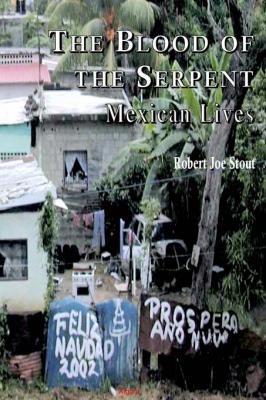
Sound Bite
Inside Mexico - a historian and talented writer provides a comprehensive view of the history and culture, with throbbing scenes of contemporary life at all levels and in all regions.
About the Author
Robert Joe Stout has written major articles about Mexico for The Christian Science Monitor, Notre Dame Magazine, and American Educator. His fiction has been published in The South Dakota Review, Kansas Quarterly, Southern Humanities Review and various anthologies. Portions of this book have appeared in Aim, Catholic Digest, Commonweal, Focus, Kit-Kat Review, Mexico West, Rosebud, Toward Freedom, and other magazines.
|
|
About the Book
What is this Mexico that lies south of our borders? Who are its people and what are they like?
The answer lies not in politics, nor in statistics, but in the personality of a nation grafted onto deep, indigenous roots by a European invader that...
What is this Mexico that lies south of our borders? Who are its people and what are they like?
The answer lies not in politics, nor in statistics, but in the personality of a nation grafted onto deep, indigenous roots by a European invader that still was entwined in feudal customs and superstitions.
While the first English pilgrims clung perilously to a few acres of Massachusetts forest, Mexico already had laws, churches, mines, shipbuilding, riots and a compelling mestizo conscience.
This narration takes readers through Mexico City at night and in the daytime, through its suburbs rich and poor, into its ceremonies - Christian and pre-Christian - and on journeys with reformers, rebels, manipulators, workers. It unravels "The Imaginary State of Petroleo" (which is more real than you might think), explores the orchards and landed estates of northeastern Mexico and the deserts where ancient cave paintings mark the existence of lost cultures and where drug dealers have established hidden landing strips.
From Tarahumara villages in the northwest through Tijuana and the melee that is life on the US-Mexican border, and from Baja and the cultivated coastal plains to the changing rhythms of Oaxaca, Chiapas and Yucatan, Stout brings Mexico to life.
|
In our favorite Mexico City hangout, a huge bustling bar called Sep's, not far from the entrance to Chapultepec Park, half a dozen of us were hoisting steins of dark beer, laughing and lying about our G. I. lives before we'd become Mexico City college students, when we saw one of our professors working his way among the crowded tables. We...
In our favorite Mexico City hangout, a huge bustling bar called Sep's, not far from the entrance to Chapultepec Park, half a dozen of us were hoisting steins of dark beer, laughing and lying about our G. I. lives before we'd become Mexico City college students, when we saw one of our professors working his way among the crowded tables. We invited him to join us. His presence brought several others to our table ' National University of Mexico graduate students, some of the professor's teaching colleagues, I don't remember who all was included or how large the group got to be. But I do remember how animated our conversations became as we challenged each other's political assertions and amended each other's historical viewpoints.Ã?Â
Mestizaje, the Revolution of 1910, Maximilian's interlude and protective tariffs aroused curiosity and controversy. So did Pancho Villa's buried treasures, the Virgin of Guadalupe, the myth of Cuauhtemoc and why and how the mysterious Toltecs disappeared. And we talked about the founding of Mexico City on an island in a lake that had formed in the crater of an extinct volcano. There, on a cactus, the Toltecs had seen the fulfillment of a promise: an eagle clutching a serpent in its claws. 'The Mexican eagle,' one of our group commented. 'The eagle,' our professor repeated. 'And beneath it, when it flew away, the serpent's blood that flows through our veins today.'
|
More Information
Market General readers. Most "Mexico" books today are travel guides and cookbooks. Then there is the 2001 bestseller On Mexican Time (Tony Cohan), plus a few other books of the "charming new life in paradise" genre, which are not so much about Mexico, but about expatriates. "Blood of the Serpent" is more accessible and impressionistic than Alan Riding's hefty 563-page "Distant Neighbors" (Vintage, 1985). In place of national...
Market General readers. Most "Mexico" books today are travel guides and cookbooks. Then there is the 2001 bestseller On Mexican Time (Tony Cohan), plus a few other books of the "charming new life in paradise" genre, which are not so much about Mexico, but about expatriates. "Blood of the Serpent" is more accessible and impressionistic than Alan Riding's hefty 563-page "Distant Neighbors" (Vintage, 1985). In place of national leaders, it portrays the opportunists and the dispossessed, the man at the slaughterhouse, the lady of leisure, the street vendor, and the child in the barrio.
|
|
Pages 312
Year: 2003
LC Classification: HN113.5.S76
Dewey code: 306'.0972--dc21
BISAC: SOC002010
Paper
ISBN: 978-0-87586-215-6
Price: USD 22.95
Hard Cover
ISBN: 978-0-87586-216-3
Price: USD 28.95
Ebook
ISBN: 978-0-87586-231-6
Price: USD 28.95
|













